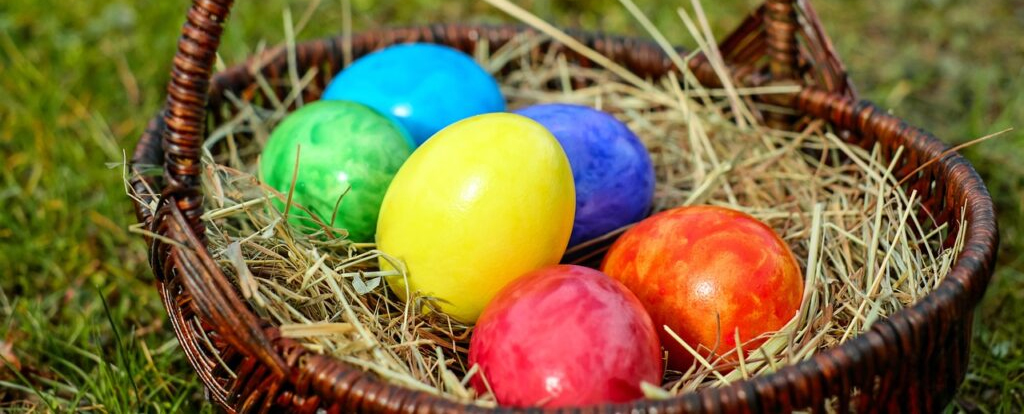

The tradition of decorated eggs has a rich and diverse history, steeped in symbolism and cultural significance. Dating back to ancient times, the practice of adorning eggs holds roots in various civilisations across the globe, with the earliest remnants of decorated ostrich eggs having been found in Africa in stratified layers dating approximately 60,000 years ago.
In pre-Christian traditions, egg decoration was often associated with themes of spring, fertility, and renewal. Ancient Egyptians utilised decorated ostrich eggs as symbols of birth and death, placing them – or gold and silver representations of them – in graves as far back as 5000 years ago. In Egypt it is still customary to eat or gift decorated boiled eggs to celebrate Sham el-Nessim, a spring-ushering national holiday believed to have originated circa 2700BC. Similarly, in Persia and Greece, egg decorating marked significant spring festivals such as Nowruz and symbolized the onset of spring and fertility.
The custom of decorating eggs spread throughout Eastern Europe, where intricate designs were applied using techniques such as Batik and wax-resist dyeing. These pagan origins later merged with Christian traditions, with eggs being dyed red to symbolise the blood of Christ, the eggshell symbolising the empty tomb from which Jesus resurrected. The entirety of the egg has also been theorised to represent the Holy Trinity with the shell, yolk, and albumen.
During the medieval period, the significance of decorated eggs expanded. Due to Lenten prohibitions on consuming animal products, Easter heralded the return of eggs as gifts to mark the end of the fasting period. This tradition traversed continents with early Christian movements, influencing Eastern Orthodox, Catholic, and Protestant practices.
In subsequent centuries, decorated eggs gained favour among royalty and the wealthy. From Edward I’s lavish purchases of 450 eggs decorated in gold leaf to be given to members of the court; to Henry VIII receiving an egg enclosed in a silver case as an Easter present from the Pope; and Queen Victoria’s personal traditions of hiding decorated eggs for the children to find as her mother had done for her, eggs became synonymous with Easter festivities.
The pinnacle of this opulence was reached with the creation of Fabergé imperial jewelled eggs in Russia, epitomizing luxury and craftsmanship. The Emperor Alexander III of Russia commissioned Peter Carl Fabergé to create a jewelled Easter egg with a secret within – a ruby pendant. Ten eggs were produced from 1885 to 1893 for Alexander, a tradition which was continued by his son Nicholas II, who had two eggs commissioned each year for his mother and his wife. These eggs are now worth millions of pounds.
While the tradition of decorated eggs has evolved over time, its essence endures. Today, chocolate eggs dominate Easter celebrations, tracing their origins to France, Germany, and the UK in the late 19th century, the first chocolate Easter eggs in the UK being created by JS Frys & son (with Cadbury), when a pure cocoa butter was developed which could be moulded into a smooth shape. Despite the shift in materials, the act of gifting decorated eggs remains a cherished custom, connecting modern celebrations to their ancient roots.
References:
• Country Living: The History of Easter Eggs
• Wikipedia: Easter egg
• English Heritage: Why Do We Have Easter Eggs?
• Folklife Today: The Ancient Art of Decorating Eggs
